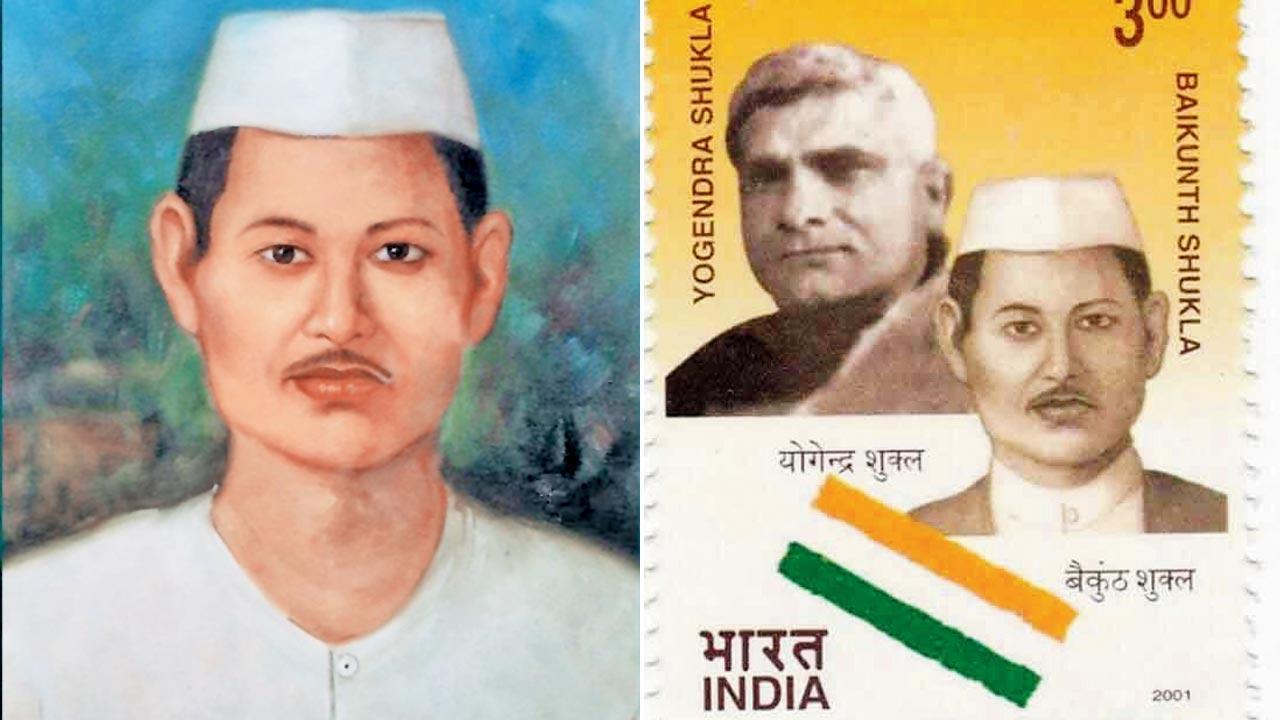Home / Sunday-mid-day / / Article /
Man who avenged Bhagat Singh
Updated On: 26 November, 2023 08:10 AM IST | Mumbai | Mitali Parekh
A pre-primary school teacher who turned revolutionary, and a 10-year-old who terrorized the colonisers. Abhijeet Bhalerao, an Income Tax officer from Mumbai, is on a mission to shine a spotlight on India’s un-celebrated revolutionaries; and their fellow freedom fighters who betrayed them

An oil painting of Baikunth Sukul, and the postage stamp featuring him and Yogendra Shukla, a freedom fighter who was his relative and who groomed him to avenge Bhagat Singh’s death
Abhijeet Bhalerao is a working-class hero—researching his obsession-of-the-moment after midnight, and writing about it on the commute. What his fellow commuters on the Goregaon-to-CST local could not have guessed is that the Income Tax inspector was on a trail dampened and dissolved by nearly a hundred years to give several little-known freedom fighters their due.
“I consider my book to be part of the subaltern history,” the unassuming Bhalerao tells us over a video-call from his native place, Hingoli, “and I am interested in revolutionaries who were stabbed in the back by peers. We think of the freedom struggle only in terms of us against the British.”




